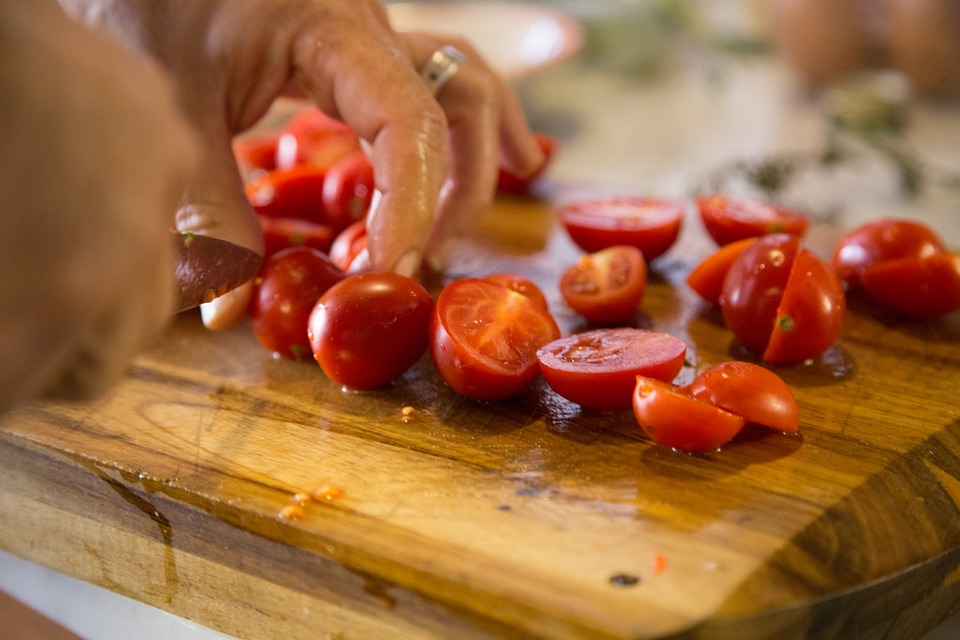When hunger pangs arrive and you head to the kitchen to prepare a meal or a snack, it helps to have healthy foods on hand so that you can fill up without filling out your clothes.
Sugary or fattening foods may be popular snacks, but consuming too many of these items can cause health implications, including weight gain, that could last for years. Although health experts tout certain “super foods” that are essential for the body, there are run-of-the-mill foods that are far less glamorous but pack their own healthy punch and are much more readily available.
When making your next shopping list, be sure to add these items.
* Rice: Starchy rice is a versatile food that can accompany many meals. Whether served as a side dish or on its own or with some broth in a soup, rice can help satisfy hunger and keep the stomach feeling full. Brown rice is a healthier option than processed white rice. Rice is also gentle on the stomach for people who need to consume bland diets due to any gastrointestinal ailments. Another advantage to rice is that it stores well and will not go bad, so you can stock up.
* Low-fat yogurt: Yogurt can be enjoyed as a snack any time of the day. Rich in calcium and healthy probiotics, yogurt can even replace certain ingredients in recipes, including creams and sour cream. As a dessert, yogurt is a better option than more fattening puddings or ice cream. Thicker varieties of yogurt can help you feel fuller, longer.
* Unsalted nuts: An excellent protein-rich snack, nuts can be the go-to food when you need a nutritional pick-me-up. Although they tend to be high in fat, much of the fat content is unsaturated fat that is rich in omega acids necessary for cardiovascular and neurological health. Nuts can be sprinkled on salads or served with cheeses to make meals more satisfying.
* Canned or dried fruits: Fruits that are packed in natural fruit juices are just as healthy as fresh produce. However, they can be stored for longer periods of time without spoiling. Many people do not consume the recommended servings of fruit, and having canned or individually packaged fruit cups available makes it easy to include fruit in your diet. Fruits are full of required vitamins and are a natural fiber source to keep digestion in check. Dried fruits can be added to nuts to make a healthy trail mix. Raisins, for example, are a great source of iron, which helps the blood transport oxygen.
* Beans and legumes: These foods are high in protein as well as fiber, generally in a low-calorie package. Beans and legumes can replace meats as a protein source in many meals when the goal is to reduce caloric and fat intake. Beans can be used to thicken sauces or make foods more hearty, helping to stretch them further.
* Vegetables: Whether fresh or frozen, vegetables are a must-have staple. Vegetables are ripe with vitamins and minerals, and pack a lot of punch with very low calories and fat. People need not worry about filling up on vegetables, and they’re one of the snacks that can be eaten in abundance without worry of racking up a lot of calories. Aim to have half of your plate filled with vegetables at every meal, which will keep you full.
* Lean protein sources: Fish, poultry and lean cuts of meat are often the basis for meals. They can be kept and enjoyed in moderation. Rich cuts of pork and beef may be flavorful but are high in saturated fats.
* Lemons or lemon juice: Rather than seasoning foods with salt and butter, lemon juice is a tasty flavoring that lends itself well to many types of foods. Lemons and limes contain limonene, furocoumarins and vitamin C, all of which help reduce your risk of cancer.
* Cranberry juice: In addition to being an antioxidant, 100 percent cranberry juice helps fight bladder infections by preventing harmful bacteria from growing. The juice can be consumed on its own or diluted to add a splash of flavor to water.
* Figs: Many people underestimate the nutritional value of figs. Figs can be eaten fresh off of the tree. Think about adding mashed figs to batters for healthier breads or even desserts. A good source of potassium and fiber, figs also contain vitamin B6, which produces mood-boosting serotonin, lowering cholesterol and preventing water retention.
There are many healthy and versatile foods that can be stored in the pantry without spoiling. They make for quick snacks and help keep you feeling fuller, longer. HM131804
 Using a vegetable peeler, cut carrot and cucumber into thin ribbons. To heat naan, follow instructions on packet. In a small bowl, stir 1/2 cup yogurt, garlic and chopped mint together.
Using a vegetable peeler, cut carrot and cucumber into thin ribbons. To heat naan, follow instructions on packet. In a small bowl, stir 1/2 cup yogurt, garlic and chopped mint together.


 Data from a small study conducted by researchers at the Cummings School of Veterinary Medicine at Tufts University reported that adolescents who had animal experience were more likely to see themselves as important contributors to communities and more likely to take on leadership roles.
Data from a small study conducted by researchers at the Cummings School of Veterinary Medicine at Tufts University reported that adolescents who had animal experience were more likely to see themselves as important contributors to communities and more likely to take on leadership roles. A study from Dennis Ownby, MD, a pediatrician and head of the allergy and immunology department of the Medical College of Georgia, found that having multiple pets decreases a child’s risk of developing certain allergies. He found that the children who were exposed to two or more dogs or cats as babies were less than half as likely to develop common allergies as kids who had no pets in the home.
A study from Dennis Ownby, MD, a pediatrician and head of the allergy and immunology department of the Medical College of Georgia, found that having multiple pets decreases a child’s risk of developing certain allergies. He found that the children who were exposed to two or more dogs or cats as babies were less than half as likely to develop common allergies as kids who had no pets in the home.

 · Navigational tools:
· Navigational tools:

 1. In slow cooker stoneware, combine beans, tomatoes, green onions, poblano, jalapeño peppers, garlic, lime zest and juice, and cheese. Stir well. Cover and cook on high for 11/2 hours, until mixture is hot and bubbly. Stir in cilantro, sprinkle with green onions, if using, and serve.
1. In slow cooker stoneware, combine beans, tomatoes, green onions, poblano, jalapeño peppers, garlic, lime zest and juice, and cheese. Stir well. Cover and cook on high for 11/2 hours, until mixture is hot and bubbly. Stir in cilantro, sprinkle with green onions, if using, and serve.


 Tickets, transportation, attire, grooming treatments, meals, and several other factors can add up to make prom very costly. However, those feeling the potential stress of the prom bill can explore various ways to cut those costs.
Tickets, transportation, attire, grooming treatments, meals, and several other factors can add up to make prom very costly. However, those feeling the potential stress of the prom bill can explore various ways to cut those costs.




